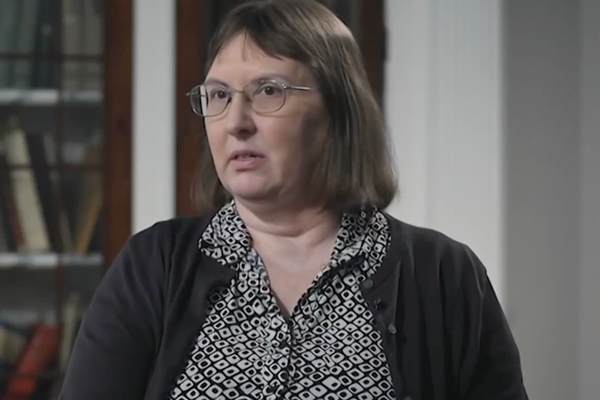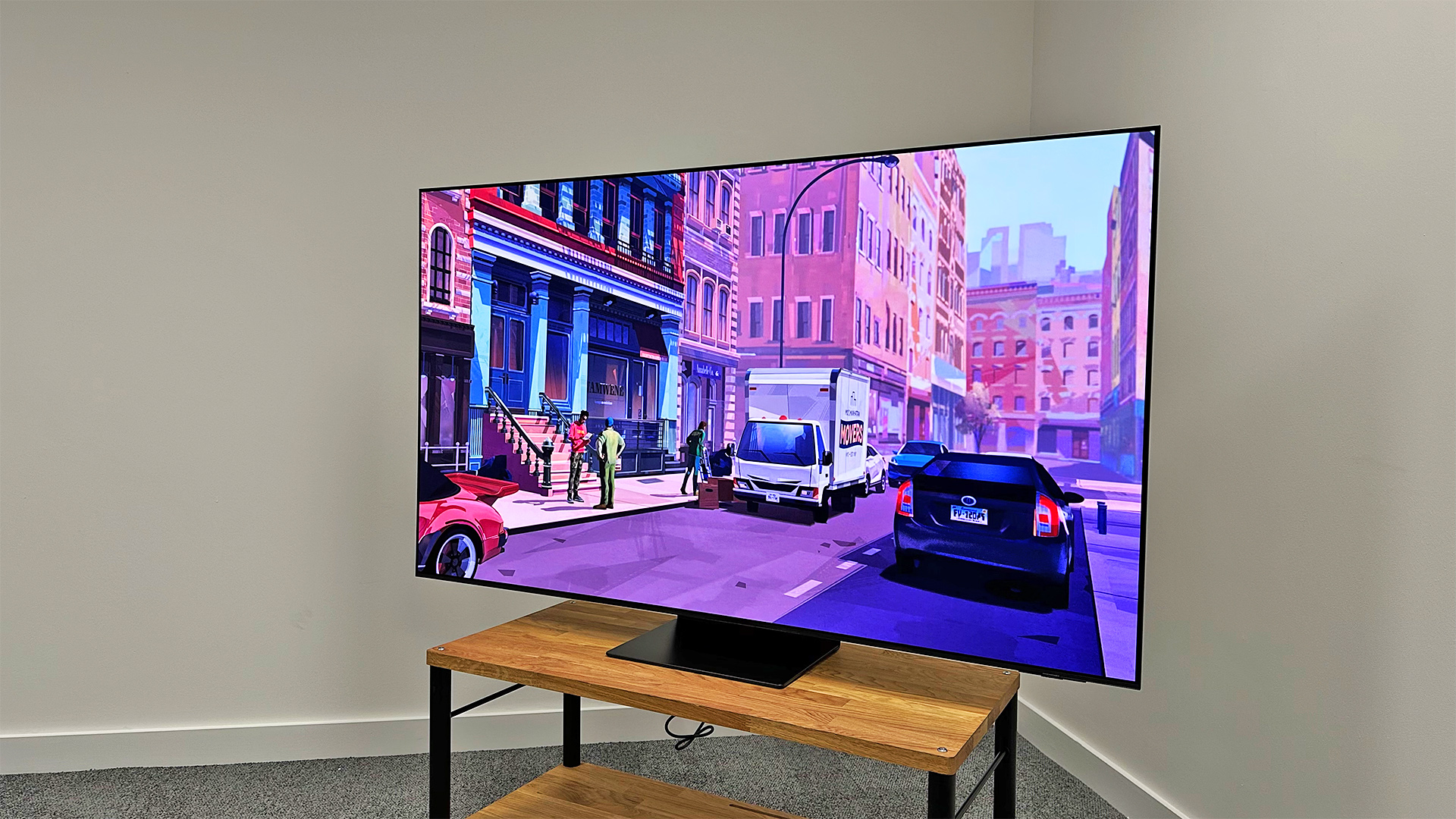
As U-turns go, it was a biggie. For years, Samsung shunned OLED technology in its TVs in favour of its own QLED, but last year, it launched its first OLED model, the S95B. But Samsung being Samsung, it didn't use standard OLED tech, but QD-OLED, which combines the pixel-perfect contrast of OLED with the lush colour vibrancy of QLED, giving you the best of both worlds.
This year it's back with two new models: the flagship S95C and step-down S90C. So what compromises does the S90C make in order to keep the price down? And which TV would serve you better? Let's find out.
Samsung S95C vs S90C: price
The S95C is Samsung's flagship model and it's priced accordingly. The 55-inch model launched at £2699 / $2499 / AU$3999, the 65-incher at £3599 / $3299 / AU$4999 and the 77-incher at £5099 / $4499 / AU$7999. However, these prices have already fallen – at Samsung.com (in the UK and US), for example, each model is £800-£900 / $200-$400 cheaper, so you can pick up the 65-incher for £2699 / $2999.
The S90C launch prices are as follows:
55 inch: £1999 / $1899 / AU$3299
65 inch: £2799 / $3299, AU$4299
77 inch: £3899 / $3599 / AU$6799
Again, these prices are £800-£900 / $300-$600 / AU$500-AU$700 cheaper on Samsung.com, so look out for even better deals at other retailers.
The S90C is also coming in a new 83-inch model, but it's not quite the same proposition. This one has a WOLED panel made by LG Display, instead of Samsung's own QD-OLED screen. So performance is likely to be slightly different. It's currently only available in the US and costs $5399.
Samsung S95C vs S90C: design
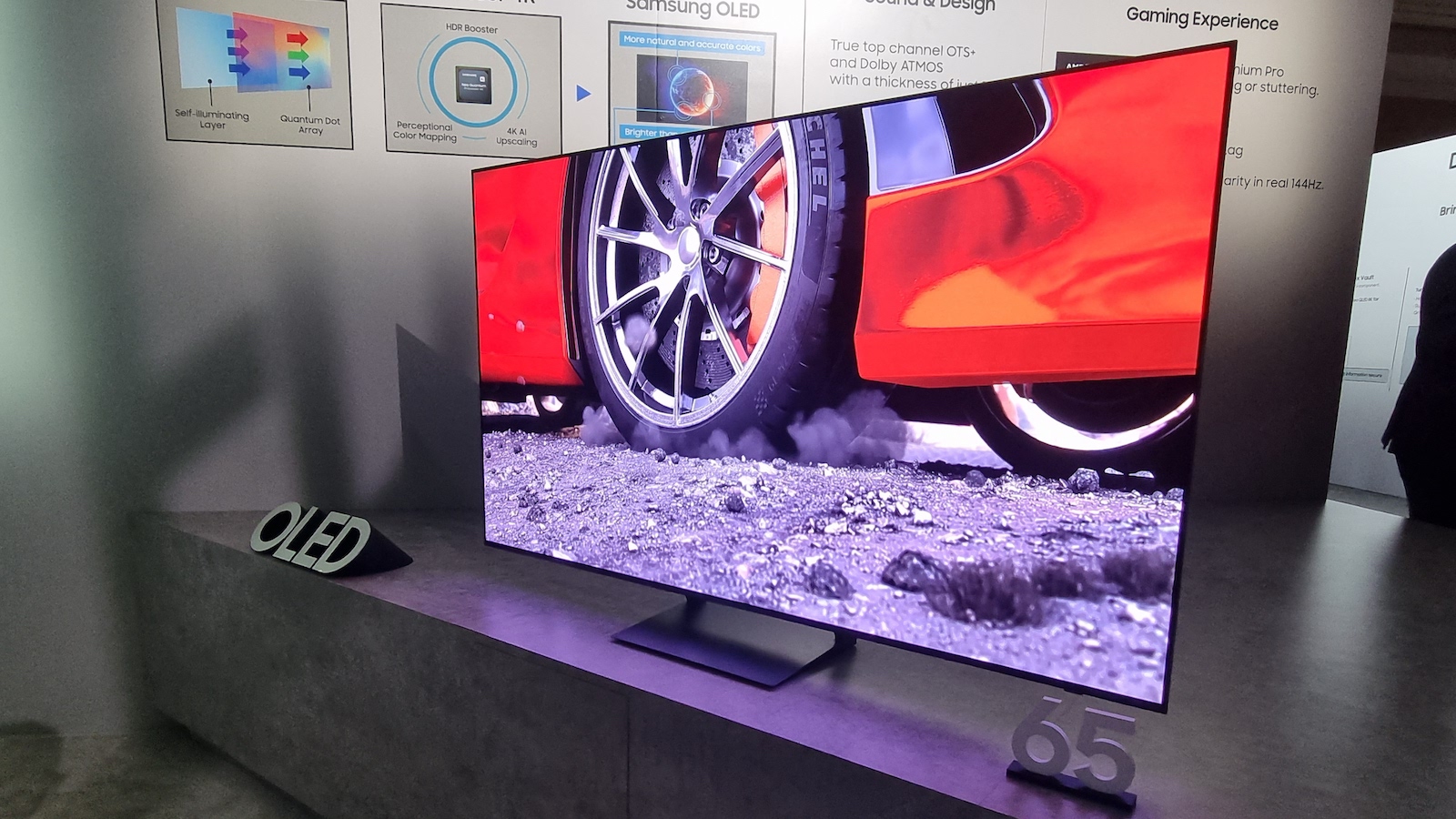
The S95C has an all-over thickness of 1.1cm, which is a change from its predecessor (which was as slim as possible over most of its chassis, with a thicker hump for the processing parts and speakers). That makes the TV feel sturdier and allows the speakers to be placed more evenly around the TV. It also makes it easier to wall mount.
This is possible thanks to the One Connect Box, which we've seen on Samsung's previous high-end TVs. It's a slab about the size of a DVD player that houses all the TV's connections. It can sit around the back of the TV's stand or be tucked away in your TV cabinet, keeping it – and the associated cable spaghetti – out of sight with just one wire running from it to the set.
The S90C lacks this, which means the cables run to the TV itself and that the set is slimmer around most of the back with a 'hump' for the speakers and processing gubbins. This design means compromises in other departments too, as we'll see...
Samsung S95C vs S90C: features
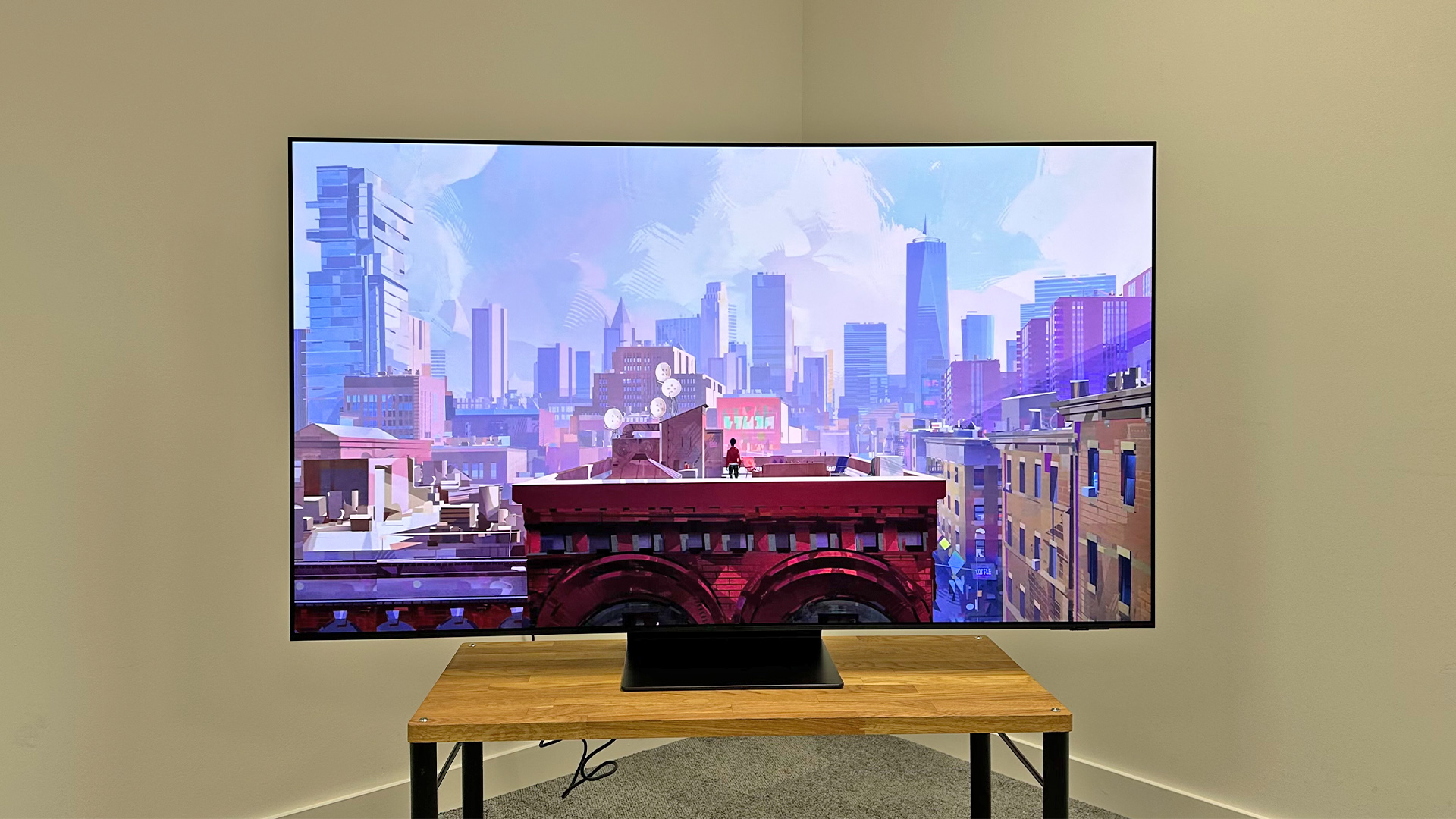
Both the S95C and S90C feature second-gen QD-LED panel tech, but the former is capable of going far brighter than the latter. Samsung isn't clear on the reasons why, but it could be different approaches to heat dissipation and/or processing.
It's not just brightness that the S95C has in spades. It also has greater colour vibrancy than lots of rival OLEDs thanks to the Quantum Dot element of its QD-OLED panel.
Like other Samsung TVs, neither the S95C nor S90C is compatible with Dolby Vision, but other forms of HDR are catered for: HLG, HDR10 and HDR10+ formats are all supported. Dolby Vision gaming is also off the menu, but both sets support all the other major gaming features, including 4K/120Hz (144Hz for PC), VRR and ALLM, across all four of its 40Gbps HDMI 2.1 inputs.
Dolby Atmos is on board, and the S95C has a 70W 4.2.2 sound system – for the S90C, this has been downgraded to the same 60W 2.2.2 arrangement as the S95B. The S90C's speakers are bunched closer together because Samsung decided to make the TV as slim as possible apart from the hump for speakers and processing innards – the S95C's are spread much more widely across the TV.
Both TVs are powered by the latest version of Samsung's Tizen operating system, which brings much-used features to the fore. It's more responsive and fluid than previous iterations too, though there is still too much advertising for our liking. But all the major apps are present, including the Xbox one that's exclusive to Samsung TVs.
TL; DR? The S90C has fewer speakers; a pared-back version of Samsung's Object Tracking Sound system, called Object Tracking Sound Lite; it doesn't go as bright; and it lacks the One Connect Box. Otherwise, the feature sets are the same.
Samsung S95C vs S90C: picture
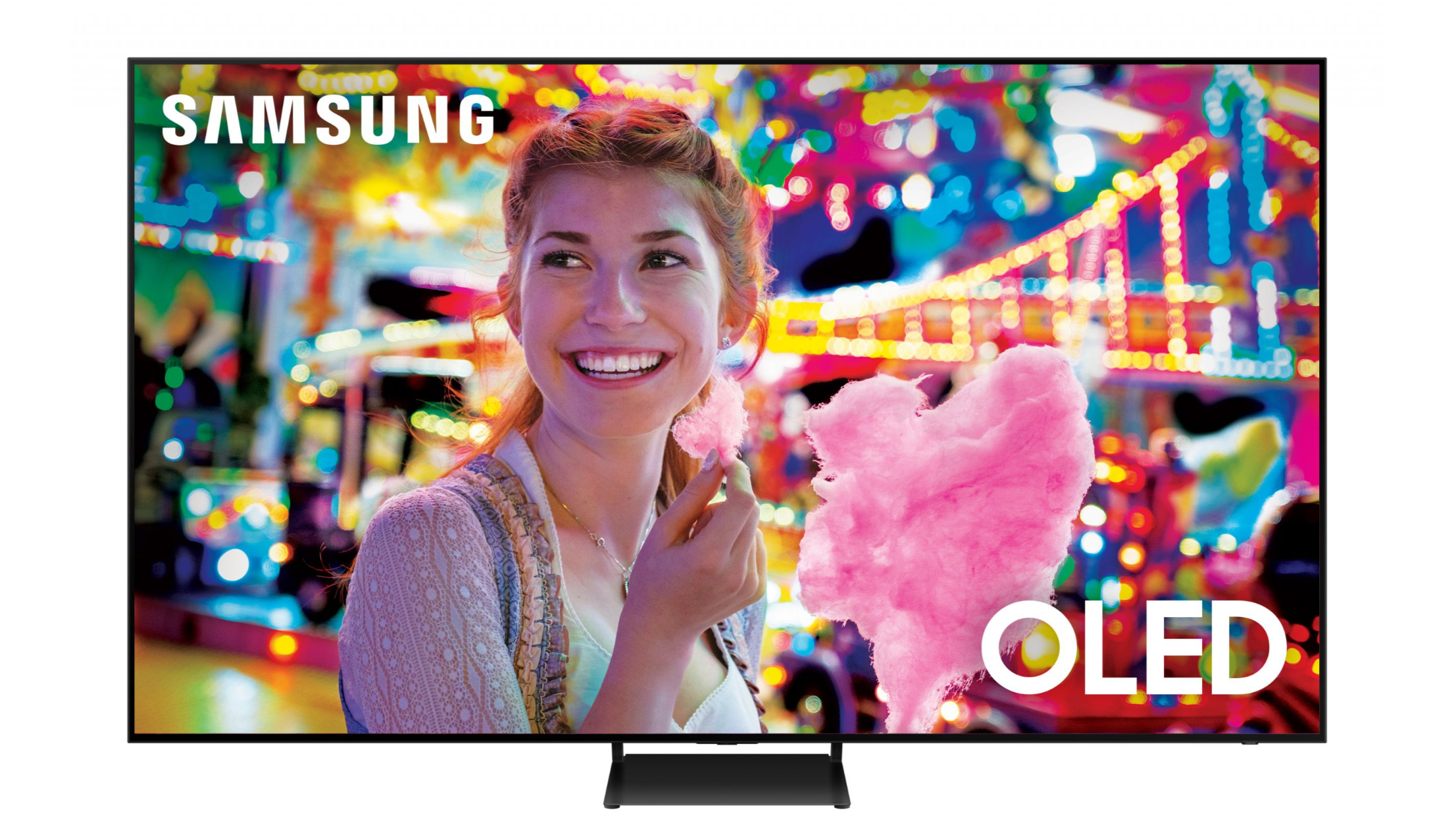
This is where things get tricky. We haven't tested the S90C, so can't give a definitive verdict on its picture quality. We have, however, reviewed its predecessor, the S95B which it replaces. As such, we can extrapolate our findings to the very similarly-specced S90C.
We loved the S95B, awarding it five stars in our review. That was mainly down to the stunning contrast, which even bested Sony's A95K QD-OLED TV. The Standard picture preset is a little more enthusiastic than most TVs', but it never looks too unnatural. Shadow details are rendered beautifully, though skin tones can look a little over- or under-saturated, depending on the lighting in the scene.
The S95B's picture is nice and sharp, even during motion, and there's very little loss of shading detail among the HDR brightness peaks. There's also practically no colour banding with video or gaming sources. You do need to tinker in the settings a bit to see the S95B at its best, but it's well worth the rewards.
Now obviously that's a different TV to the S90C. But given the lineage, and the similar spec sheet, we would expect a largely similar performance from the S90C.
The S95C's Filmmaker mode, by contrast, looks a little dull. Everything is a bit overcast and subdued, and shadow detail is lacking. But general detail is superb, as are sharpness and solidity, which makes for a very three-dimensional image.
Again, a bit of menu fiddling is in order to sort out the issues – in the Movie preset (which is like Filmmaker Mode but with HDR Tone Mapping set to Active) the picture has much more 'pop'. Brightness and contrast are much improved, while colours have a richness and vibrancy not often seen. It all serves to create an image with tons of impact.
Subtlety remains a bit of a sticking point for Samsung. The shading isn't nearly delicate enough for our liking, which makes skin tones lack depth. But turn the HDR Tone Mapping back to Static, and switch Contrast Enhancer from Off to Low, and you'll see the S95C at its best. Subtlety still isn't perfect, but it's better, and the picture retains plenty of dynamism.
Samsung S95C vs S90C: sound
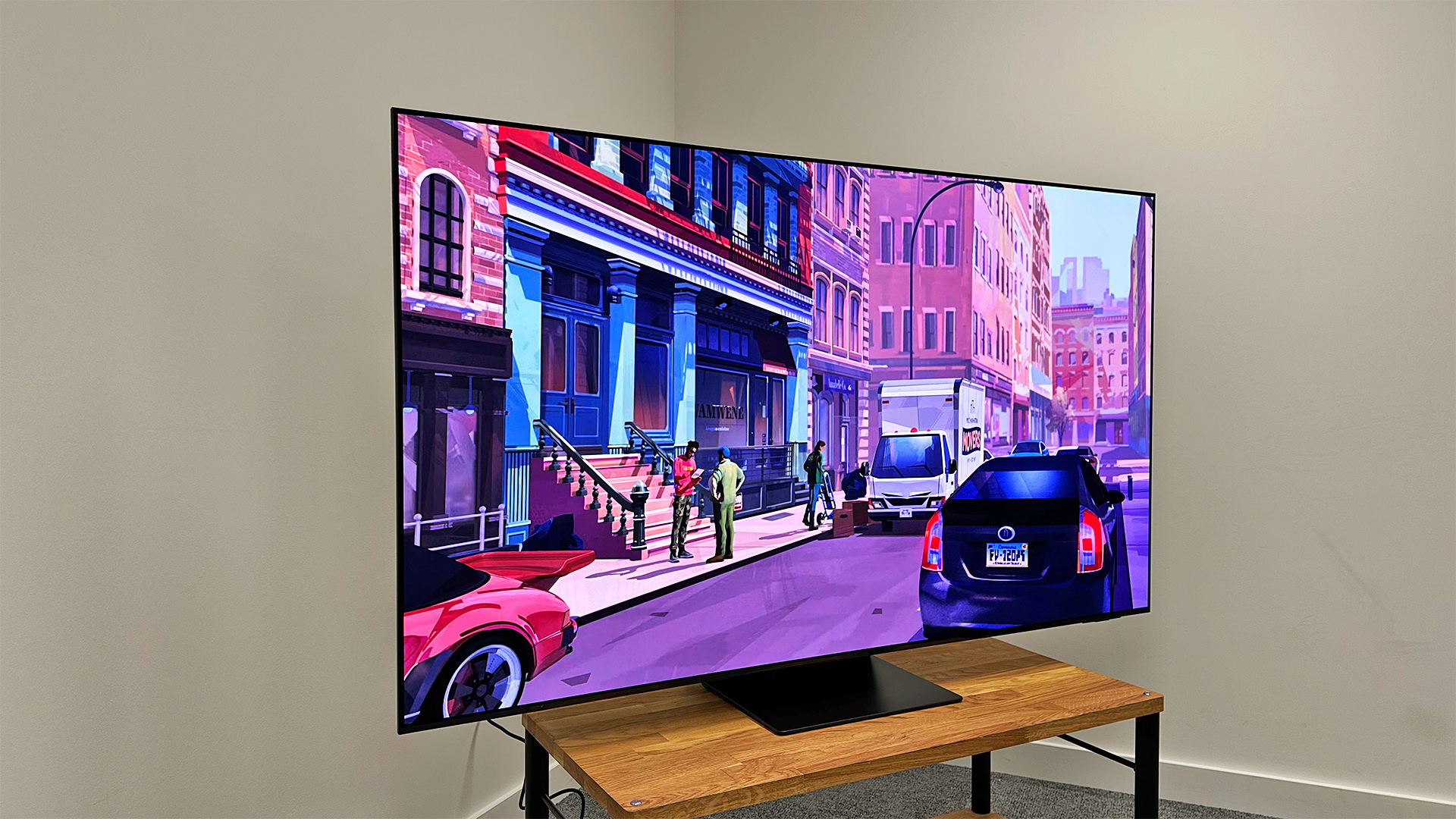
Again, we haven't heard the S90C, so can't commit to a verdict on its sonic skills. But it seems to have the same sound system as the S95B, which impressed us last year. The S95B's audio is clean and given ample staging, while the OTS system manages to pinpoint certain sounds to exact spots. Dialogue has plenty of projection too.
But it is lacking in the low end. Thundering bass sounds cause the speakers to crackle and buzz sometimes too, and the TV doesn't go nearly as loud as we would like.
The S95C too sounds punchy and dynamic, making it very engaging. It’s relatively spacious, too, with the soundstage extending a fair way to either side of the set, and a small distance above it.
But it too is lacking bass weight and depth. This at least avoids the kind of low-end distortion common to some of its rivals. There's some harshness to its upper-midrange, and the audio doesn't project into the room as far as we would like.
Our advice? Whichever TV you go for – and that includes non-Samsung models – add a soundbar, or even a surround sound system if your budget and space allow.
Samsung S95C vs S90C: early verdict
There's no doubt about it, the S95C is the more technically impressive TV, with brighter QD-OLED screen technology, a better speaker system and the One Connect Box making it more aesthetically pleasing.
Until we get the S90C in our testing rooms, we'll reserve judgement on its audio-visual performance, but it's likely to be comparable to the five-star Samsung S95B from last year. Find it on a deal, and it could be the better investment, but if money is no object, the S95C should give you a more fulfilling viewing experience.
MORE:
Samsung S95C vs S95B: does Samsung's new QD-OLED TV beat its predecessor?
Samsung 2023 TV lineup: everything you need to know
Check out the best OLED TVs around





